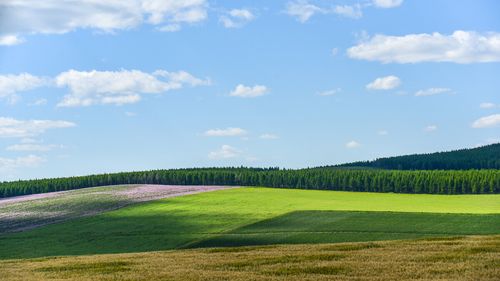How Internet of Things is Revolutionizing the Future of Agriculture
The Internet of Things (IoT) is transforming Agriculture at an unprecedented rate. With every passing day, the global population is growing, and the demand for food is increasing. IoT is enabling farmers to meet these demands consistently and sustainably through increased efficiency and precision in agricultural operations. In this article, we explore how IoT is revolutionizing agriculture.
Smart Farming
IoT-enabled smart farming technologies are reshaping agriculture operations. Agricultural sensors and monitoring devices can continuously collect vital data such as soil moisture, temperature, humidity, and crop health. By analyzing this data, farmers can make informed decisions regarding irrigation, fertilization, pest management, and crop monitoring. Smart farming ensures that farmers can optimize the use of resources and increase their yields while reducing production costs.
Digital Farming
Digital farming is a precision agriculture concept that leverages IoT technologies to create digital representations of farmland. IoT-enabled devices and sensors collect data related to weather patterns, soil composition, crop maturity, and plant growth. This information is then analyzed to create a digital model of the farm that can be monitored and analyzed by farmers remotely. With digital farming, farmers can make data-driven decisions that ensure crop growth and yield optimization.
Automated Farming
IoT has made it possible to automate agricultural operations such as planting, irrigation, and harvesting. Farmers can use smart machines and drones equipped with IoT sensors to carry out repetitive and labor-intensive farming tasks. Automated farming not only saves time but eliminates human error, which can lead to significant losses. By automating, farmers can streamline their operations and increase production efficiency to meet growing food demands.
IoT-based Livestock Management
IoT is also transforming livestock production. IoT sensors and devices can be used to monitor the health conditions of livestock, track their location, and analyze their behaviors. Farmers can leverage these data to make informed decisions concerning breeding, feeding, and health management. Furthermore, IoT-based livestock management improves animal welfare and guarantees the production of high-quality meat, dairy, and other livestock products.
Challenges Facing IoT in Agriculture
Despite the numerous benefits of IoT in agriculture, several challenges must be addressed before full-scale adoption. One significant challenge is the high cost of IoT-enabled farm equipment and machinery. Moreover, implementing IoT requires robust technical expertise, which might not be readily available in rural areas. Another challenge is the security of IoT devices and sensors, which are vulnerable to cyber-attacks.
Conclusion
IoT is revolutionizing the agriculture sector. With smart farming, digital farming, automated farming, and IoT-based livestock management, farmers can optimize their operations for increased productivity and efficiency. However, challenges such as high costs and technical expertise must be addressed to ensure full-scale adoption of IoT. With IoT-enabled agriculture, the world can sustainably meet growing food demands while minimizing environmental impacts.
(Note: Do you have knowledge or insights to share? Unlock new opportunities and expand your reach by joining our authors team. Click Registration to join us and share your expertise with our readers.)
Speech tips:
Please note that any statements involving politics will not be approved.
